If you haven’t heard there is a shortage of iodine based IV Contrast material that enables contrast images in CT scans. That means cancer patients and others are unable to be accurately diagnosed without the material that makes it easier to view organs, blood vessels and tumors.
The use of IV contrast improves the accuracy of the examination and assists excluding many life-threatening conditions, such as cancer. IV contrast is mainly used to highlight differences between soft tissues which would otherwise look the same. In some cases, they can’t be seen at all without the contrast.
Apparently 80% of this material comes from a single manufacturing facility in Shanghai, which is under shutdown as a COVID quarantine measure.
Add to that, the shortage of baby formula in the U.S. is causing major stress and frequent hardships for families around the country. That is a fact! And when you hear that authorities were warned of this back in October of last year, seven months ago, it makes one wonder what people are thinking, let alone doing to rectify the problem to avert crisis.
On another related topic, the past year or so, fertilizer prices have increased by about 200% to 400%. It makes sense because chemical-based fertilizers require petroleum in some form. We are all aware of the terrible situation we are in here in America regarding petroleum prices with the average price of regular gas now above $6 nationally. And, of course, we should be informed that much of our petroleum for those fertilizers is now supplied by nations that are either hostile to the U.S. or trending that way.
From supply chain challenges to lack of resource availability, mainstream food production in our country is essentially under attack. When there is trouble in the farm sector there is normally on its way, trouble in the food sector also.
You can read and hear increasingly that securing food, regardless of affordability, is something many Americans are thinking about for the first time. Demand for survival food kits is reportedly skyrocketing.
Two years ago, there were empty grocery store shelves. Most thought of it as a temporary issue, but the ongoing price hikes and supply chain obstacles we are experiencing present long-term concerns.
The following excerpt is from an article written by a famous farmer from Virginia’s Shenandoah Valley. Joel Salatin is the owner of Polyface Farm and an author, speaker, and pretty sharp economist. Healthcare is not only a business of helping sick people but of helping them not get sick. Joel provides insights regarding food and food sourcing from which we may gain significant benefit.
This leads me to ponder what the most secure food chain would look like. As a farmer and direct marketer (servicing our own farm production directly to consumers), I am thinking about not only our own production security but also the security of food we buy. We don’t grow everything we eat.
With that in mind, here is what our country should be doing – from producers to consumers – to have more food security.
- Production based on biology, not mechanics.For nearly 200 years, mainstream agriculture has increasingly downplayed biology and played up nonliving things. Food is a living thing. It is not an inert, inanimate substance like nails or plastic or threads.
The industry today relies on nonliving things like chemical fertilizers rather than on living things like microbes. The further a farm moves away from living things, the more vulnerable it is to mining, distribution and resource disruptions. Soils alive with biological fertilizers don’t have to depend on inputs from around the world.
If your food comes from compost instead of chemicals, you’ll have a much more secure supply. I’m thankful that our farm buys no chemical- or petroleum-based fertilizers and is therefore immune to many shortages and price hikes. What a relief.
- Less machinery and more nature.On our farm, we have 8 miles of buried water lines that bring gravity-pressure water from excavated high-terrain ponds to be used for livestock water and irrigation. No electricity… no pumps. We make hundreds of tons of compost not with expensive equipment but with pigs (we call them “pigaerators”).
These and other techniques enable us to produce more with less machinery. That reduces energy usage, depreciation, and, by extension, replacement costs and headaches.
- Regional sourcing.We buy apple juice from a biological apple orchard about 80 miles away. And we buy a year’s supply at a time. That gives us not only a discount but also a stable supply. We know the farmer, and he knows us.
Likewise, we purchase grains for our omnivores from local farmers. We’re not tied in to Russia or Ukraine, both of which are major grain producers. We use a local non-GMO mill less than 20 miles away. We’re on a first-name basis and are their No. 1 customer.
Yes, commodity prices may go up. But what our local farmers do is not inherently tied to global availability or pricing. And they’re certainly closer.

